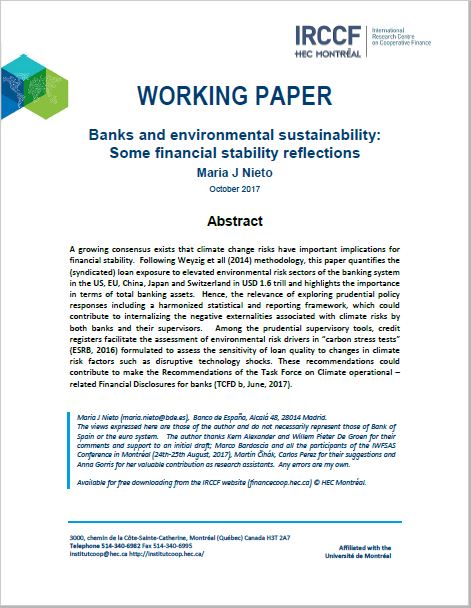Author(s): Maria J Nieto, Bank of Spain
Subject: Banks and environment
Date of publication: September 2017
A growing consensus exists that climate change risks have important implications for financial stability. Following the Weyzig et al. (2014) methodology, this paper quantifies the (syndicated) loan exposure to elevated environmental risk sectors of the banking systems in the United States, the European Union, China, Japan and Switzerland to be USD 1.6 trillion and highlights the importance in terms of total banking assets. Hence, the relevance of exploring prudential policy responses, including a harmonized statistical and reporting framework, which could contribute to internalizing the negative externalities associated with climate risks by both banks and their supervisors. Among the prudential supervisory tools, credit registers facilitate the assessment of environmental risk drivers in “carbon stress tests” (ESRB, 2016) formulated to assess the sensitivity of loan quality to changes in climate risk factors, such as disruptive technology shocks. These recommendations could contribute to make the Recommendations of the Task Force on Climate-related Financial Disclosures operational for banks (TCFD b, June, 2017).

